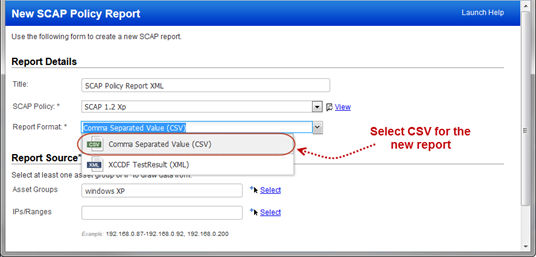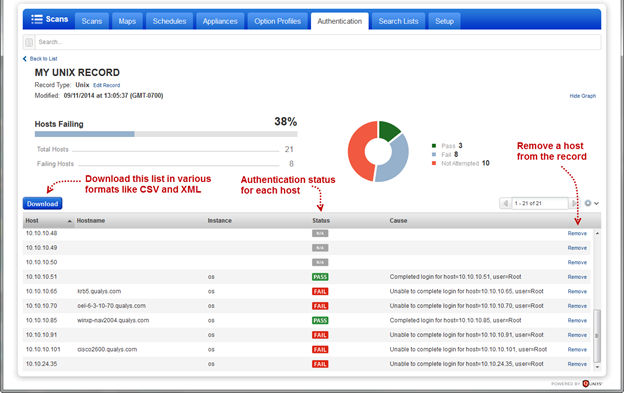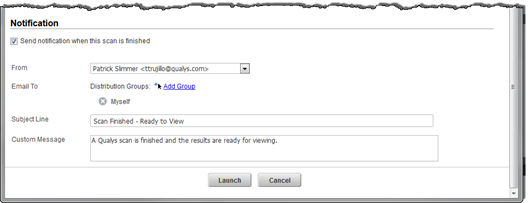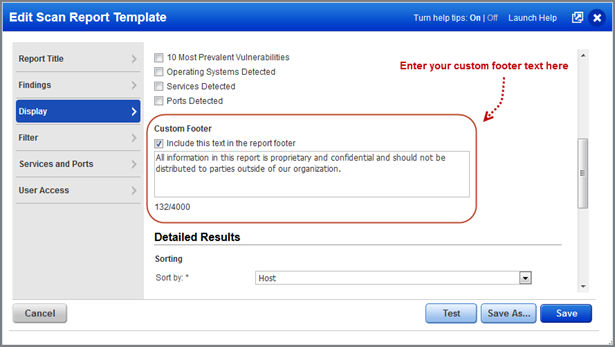Qualys 8.2 New Features
This new release of the Qualys Cloud Suite of Security and Compliance Applications includes multiple improvements to Vulnerability Management and Policy Compliance designed to improve ease of use, add reporting options and features, and expand platform support including compliance scanning for Amazon EC2.
Feature highlights include:
- Asset Tag Support in Remediation Policies in Vulnerability Management
- Policy Library and Reporting Improvements in Policy Compliance
- Compliance Scanning support for Amazon EC2 in Policy Compliance
- Several core improvements including:
- New Authentication Dashboard with drill down support
- Account Activity page
- Customizable report footers
- Improved date picker
- Notification improvements
- Platform support for Microsoft IIS 8
Qualys 8.2 will be released in production in October 2014 depending on the platform. Details about the release schedule are at the end of this blog post.
Vulnerability Management
Asset Tag Support in Remediation Policies: With Qualys 8.2 Vulnerability Management, you can now use tags in a remediation policy rule to tell us which hosts the rule applies to. We’ll evaluate the policy rule against scan results for the hosts that match your tag selection.
Use IP Network Range Tags Option: Like with scans, this option lets you select tags with IP address rules. For each tag you select, we’ll include the entire IP range (or IP ranges) defined in the tag rule, and we’ll evaluate the policy against any scanned host in the IP range(s).
Policy Compliance (PC)
Import Locked Policies as Unlocked: In previous versions of Qualys Policy Compliance, the locked state of a policy could not be changed on import. As a result, the library contains Locked and Unlocked versions of the policies.
With Qualys Policy Compliance 8.2, you can now select a locked policy in our Library and import it as unlocked. This makes the policy completely editable – you’ll be able to add/remove controls, change control values, add technologies, etc. We will soon be revising the content in the policy library to take advantage of this new feature. This will make it easier to find the policies you are interested in as our policy library expands.
You’ll notice that the policy is saved to your policies list as unlocked (you won’t see a lock icon).
Policies added to Asset Group Information: With Qualys Policy Compliance 8.2, it is now easier to see which policies are associated with an asset group. When you view asset group information, we’ll now show you all the policies the asset group belongs to.
Launch Scans in your Amazon EC2 Environment: We now support launching EC2 compliance scans on your Amazon EC2 hosts (in your Amazon Web Services account). The Amazon EC2 Scan workflow using Qualys is pre-authorized by AWS. The feature must be enabled in your account, please visit the release notes for prerequisites and additional details about this exciting new feature.
SCAP Policy Report in CSV Format: We’ve added the ability to generate SCAP policy reports in CSV format for customers that prefer to import the data to external systems or to open the data in spreadsheet format. SCAP policy reports were previously only available in XML format.
Below is a sample CSV report. The scan result details section shows the compliance posture for each rule on each host included in the report. Other sections show host statistics and rule statistics.
Qualys Cloud Platform
New Authentication Records Dashboard: We’ve added a new dashboard to the authentication records list with search and filter options that make managing your authentication credentials easier than ever.
Use the dashboard to quickly:
- Find credentials not used in the last 30 days
- Find credentials failing more than 50% of the time (Failing)
- Find credentials failing more than 25% of the time (Problematic)
- Find credentials stored in a password vault
- Search for records by type, network, title, IP address, vault
- Drill down into record details to see pass/fail authentication status for your hosts
Drill-down into the details: For any record click the Details link to get information like the pass/fail authentication status for each host in the record. You can also remove hosts from the record and download the list in various formats, including CSV, MHT, ZIP and XML.
View Account Activity: We’ve added a new Account Activity page to help you identify unusual or unauthorized account access. You’ll also have the ability to sign out of other active sessions. We’ll show you when each session was created and the IP address from which the session was established.
New Scan Complete Notifications: You can now have an email notification sent to distribution groups when your scheduled scan is finished and the results have been processed. Keep in mind that your distribution groups may include email addresses for users in the subscription and for users outside of the subscription.
You can also have a scan complete notification sent to distribution groups when your on-demand scan is finished and the results have been processed. On the Launch Scan page, scroll down to the Notifications section and complete the form.
Add a Custom Footer to Your Reports: You can now add custom text to the footer section of your reports. For example, you may want to include a disclosure statement or data classification (e.g. Public, Confidential) in this section.
Asset Group ID added to the Asset Groups List: You can now show each asset group’s ID directly in the asset groups list (Assets > Asset Groups). In previous releases, the ID appeared only in the Asset Group Information page.
MS IIS 8.x Platform Support: We have extended our support for MS IIS authentication to include MS IIS version 8.x (6.0 and 7.x are already supported).
Improved Date Picker: When specifying a timeframe using “Within the Last N days” you can now enter a value directly into the field instead of picking a set value from the drop-down. This gives you greater flexibility since you can enter values that aren’t in the list. You can also type values like “last 99 days” and “previous quarter” directly into date fields.
Here are a few examples.
Release Schedule
For details about the release dates for specific platforms and to subscribe to release notifications by email, please see the following:
















